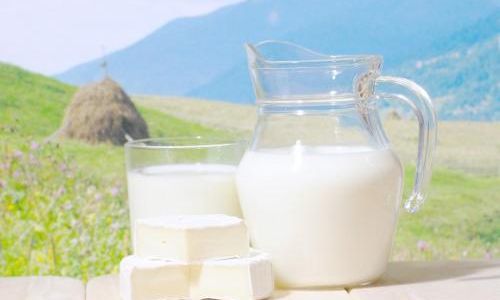Introduction
In the bustling world of modern nutrition, fresh milk stands as a cornerstone of a balanced diet. Its rich profile of essential nutrients, including calcium, vitamin D, protein, and potassium, makes it an indispensable choice for health-conscious individuals. However, with the myriad options available in the market, selecting high-quality fresh milk can often become a daunting task. This article aims to provide a comprehensive guide on how to discern and choose the freshest, most nutritious, and safest milk, ensuring that every drop contributes positively to your health and well-being.
Understanding the Types of Milk
Before diving into the specifics of selection, it’s crucial to understand the different types of milk available. Common varieties include whole milk, skimmed milk, semi-skimmed milk, organic milk, and those fortified with additional nutrients. Each type serves a unique purpose and caters to specific dietary needs.

-
Whole Milk: Contains the full fat content of the milk, typically around 3.5-4% fat. It is rich in flavor and provides a higher calorie intake, suitable for children and those requiring additional energy.
-
Skimmed Milk: Also known as non-fat or low-fat milk, it has most of the fat removed, containing less than 0.5% fat. Ideal for individuals watching their calorie intake or those with cardiovascular health concerns.
-
Semi-Skimmed Milk: A compromise between whole and skimmed milk, with a fat content of around 1.5-1.8%. It offers a balance of flavor and reduced fat content.
-
Organic Milk: Produced without synthetic pesticides, hormones, or antibiotics. Organic farming practices often lead to healthier cows and, consequently, milk with potentially higher nutritional value and fewer contaminants.
-
Fortified Milk: Milk enriched with additional nutrients such as vitamin D, omega-3 fatty acids, or calcium. These can be beneficial for specific health conditions or dietary requirements.
Key Factors to Consider
When selecting high-quality fresh milk, several factors come into play. Here’s a detailed breakdown of each:
-
Source and Farming Practices
The quality of milk begins with the health and well-being of the dairy cows. Look for milk sourced from farms that prioritize animal welfare, use sustainable farming practices, and avoid the use of growth hormones and antibiotics. Organic certification is a good indicator of these practices, but it’s also worth researching individual farms to understand their commitment to quality and ethics.
-
Pasteurization and Processing

Pasteurization is a critical step in milk production that kills harmful bacteria and extends its shelf life. However, over-processing can degrade the nutritional quality of milk. Choose milk that has undergone minimal processing and has been gently pasteurized to retain as many natural nutrients as possible. Ultra-high-temperature (UHT) milk, while having a longer shelf life, undergoes more intense processing and may lose some of its nutritional benefits.
-
Freshness and Shelf Life
Freshness is paramount when it comes to milk. Check the ‘best before’ date on the packaging and opt for milk with the farthest date to ensure maximum freshness. Additionally, look for milk that has been refrigerated from the point of production to the store shelf. This maintains the quality and extends the shelf life once opened.
-
Appearance and Texture
Visual inspection can reveal a lot about the quality of milk. High-quality milk should have a creamy white color with no visible impurities. Its texture should be smooth and free from lumps or separation. Fresh milk may have a slight creamy scent, while stale milk often develops an unpleasant odor.
-
Nutritional Label
Reading the nutritional label is essential for making informed choices. Look for milk that is high in essential nutrients like calcium, vitamin D, and protein while being low in added sugars and unhealthy fats. For specific dietary needs, such as lactose intolerance or veganism, alternative milk options like almond milk, soy milk, or oat milk may be suitable, though their nutritional profiles differ significantly from cow’s milk.
-
Brand Reputation and Transparency
Choosing a reputable brand that is transparent about its sourcing, farming practices, and processing methods can provide an additional layer of assurance. Research brands that have a history of producing high-quality products and are committed to ethical practices. Reading customer reviews and seeking recommendations from trusted sources can also help in making an informed decision.
-
Environmental Impact

In today’s world, considering the environmental impact of our food choices is increasingly important. Look for milk produced with minimal environmental harm, such as those from farms that use renewable energy, recycle water, and minimize waste. Supporting sustainable dairy practices contributes to a healthier planet and future.
Practical Tips for Buying and Storing Milk
Now that you know what to look for, here are some practical tips to ensure you bring home the freshest, highest-quality milk:
-
Shop Smart: Plan your grocery trips to minimize the time milk spends out of refrigeration. Choose milk that is at the back of the dairy section, as these are likely to be the freshest, having been recently stocked.
-
Proper Storage: Once home, immediately refrigerate milk in the coldest part of your fridge, usually the back bottom shelf. Keep the container tightly sealed to prevent contamination and maintain freshness.
-
Use Within the Recommended Time: Even if the ‘best before’ date hasn’t passed, it’s best to consume milk within a few days of opening to enjoy its peak freshness and nutritional value.
-
Smell and Taste Before Use: Always check milk for any off odors or flavors before consuming. If it smells or tastes sour, discard it immediately.
Conclusion
Selecting high-quality fresh milk is a multi-faceted process that involves understanding the types of milk available, considering the source and farming practices, evaluating freshness and nutritional content, and making environmentally conscious choices. By following the guidelines outlined in this article, you can ensure that your milk is not only nutritious and delicious but also sourced ethically and sustainably. Remember, the quality of the milk you choose directly impacts your health and well-being, so make informed decisions to nourish your body with the best it deserves.






0 comments